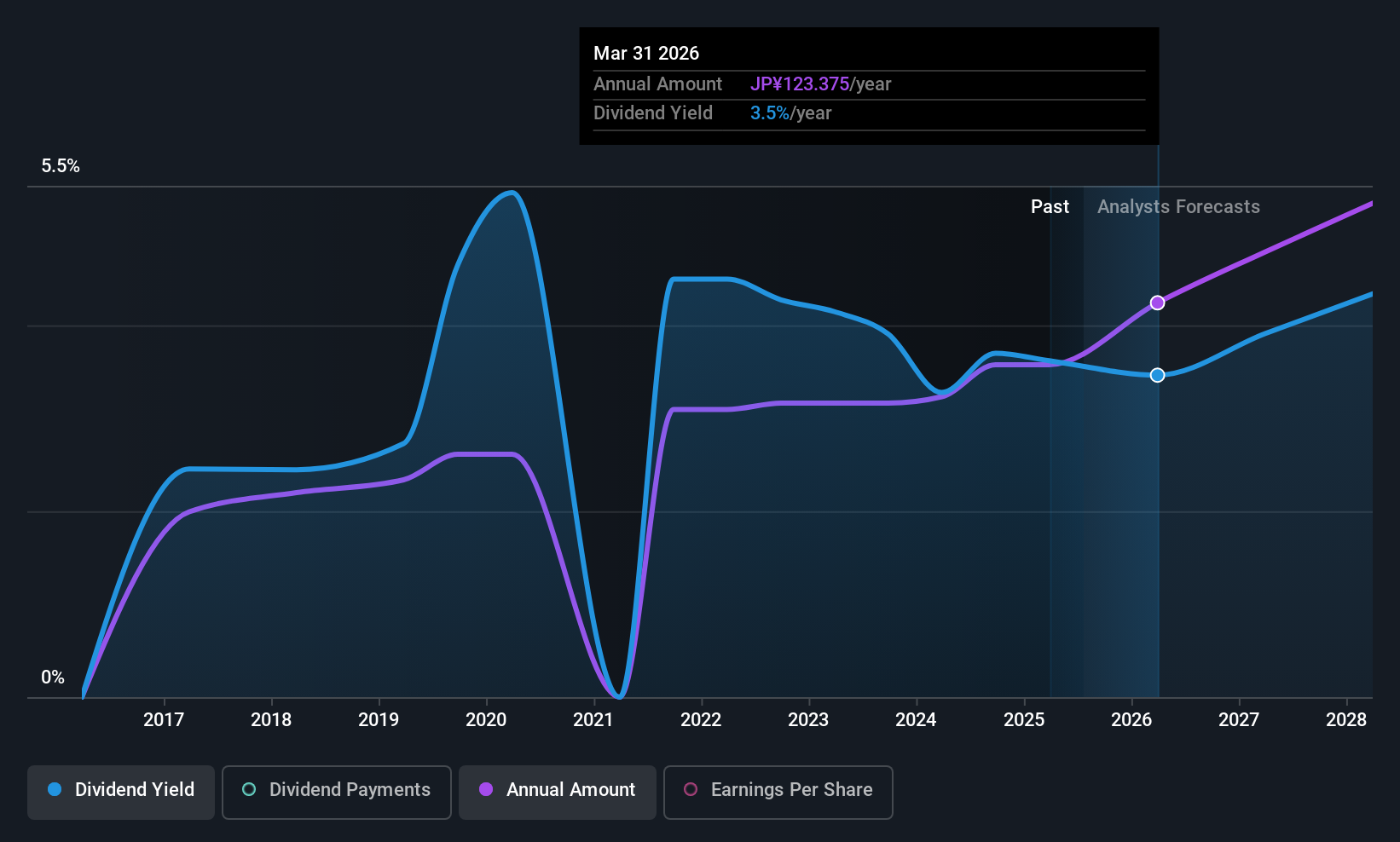Japan Post Insurance (TSE:7181) Has Announced That It Will Be Increasing Its Dividend To ¥62.00
Japan Post Insurance Co., Ltd. (TSE:7181) will increase its dividend from last year's comparable payment on the 5th of December to ¥62.00. This makes the dividend yield about the same as the industry average at 3.5%.
Japan Post Insurance's Future Dividend Projections Appear Well Covered By Earnings
Unless the payments are sustainable, the dividend yield doesn't mean too much. Prior to this announcement, Japan Post Insurance's earnings easily covered the dividend, but free cash flows were negative. We think that cash flows should take priority over earnings, so this is definitely a worry for the dividend going forward.
Over the next year, EPS is forecast to expand by 6.2%. If the dividend continues along recent trends, we estimate the payout ratio will be 36%, which is in the range that makes us comfortable with the sustainability of the dividend.

View our latest analysis for Japan Post Insurance
Japan Post Insurance's Dividend Has Lacked Consistency
Looking back, Japan Post Insurance's dividend hasn't been particularly consistent. This makes us cautious about the consistency of the dividend over a full economic cycle. The annual payment during the last 9 years was ¥58.00 in 2016, and the most recent fiscal year payment was ¥124.00. This implies that the company grew its distributions at a yearly rate of about 8.8% over that duration. A reasonable rate of dividend growth is good to see, but we're wary that the dividend history is not as solid as we'd like, having been cut at least once.
Dividend Growth May Be Hard To Achieve
With a relatively unstable dividend, it's even more important to see if earnings per share is growing. Earnings has been rising at 3.9% per annum over the last five years, which admittedly is a bit slow. If Japan Post Insurance is struggling to find viable investments, it always has the option to increase its payout ratio to pay more to shareholders.
In Summary
In summary, while it's always good to see the dividend being raised, we don't think Japan Post Insurance's payments are rock solid. While the low payout ratio is a redeeming feature, this is offset by the minimal cash to cover the payments. We would be a touch cautious of relying on this stock primarily for the dividend income.
Investors generally tend to favour companies with a consistent, stable dividend policy as opposed to those operating an irregular one. At the same time, there are other factors our readers should be conscious of before pouring capital into a stock. Just as an example, we've come across 3 warning signs for Japan Post Insurance you should be aware of, and 2 of them shouldn't be ignored. Is Japan Post Insurance not quite the opportunity you were looking for? Why not check out our selection of top dividend stocks.
New: Manage All Your Stock Portfolios in One Place
We've created the ultimate portfolio companion for stock investors, and it's free.
• Connect an unlimited number of Portfolios and see your total in one currency
• Be alerted to new Warning Signs or Risks via email or mobile
• Track the Fair Value of your stocks
Have feedback on this article? Concerned about the content? Get in touch with us directly. Alternatively, email editorial-team (at) simplywallst.com.
This article by Simply Wall St is general in nature. We provide commentary based on historical data and analyst forecasts only using an unbiased methodology and our articles are not intended to be financial advice. It does not constitute a recommendation to buy or sell any stock, and does not take account of your objectives, or your financial situation. We aim to bring you long-term focused analysis driven by fundamental data. Note that our analysis may not factor in the latest price-sensitive company announcements or qualitative material. Simply Wall St has no position in any stocks mentioned.
About TSE:7181
Japan Post Insurance
Provides life insurance products and services in Japan.
Undervalued with acceptable track record.
Similar Companies
Market Insights
Community Narratives




